“Ardi” skeleton sheds light on common ancestor
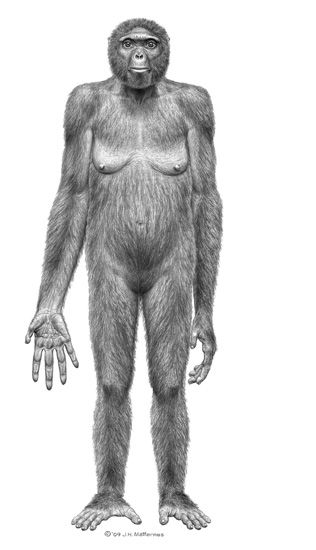
The Swiss anthropologist who assisted in virtually reconstructing a recently-discovered hominoid skeleton says the find casts important light on human evolution.
At 4.4 million years old, Ardi, or Ardipithecus ramidus, is one of our oldest ancestors from Africa; she also plays a vital role in understanding how both humans and the great apes have developed.
According to extensive research published in the latest edition of the journal Science, Ardi was an adult female weighing 50 kilograms and 1.2 metres tall. She roamed forests in what is now Ethiopia a million years before the famous Lucy, long considered the earliest skeleton of a human ancestor.
Her discovery provides evidence that chimpanzees and humans evolved from some common ancestor, which is thought to have lived six to seven million years ago, but that each evolved and changed separately along the way.
“This is not that common ancestor, but it’s the closest we have ever been able to come,” Tim White of the University of California at Berkeley, who helped lead the research team, told the Associated Press.
Christoph Zollikofer, an anthropology professor at Zurich University, said the find was momentous as it “not only told us something about our own evolution but also about that of the great apes – the chimpanzees and gorillas – in Africa”.
Common ancestor
“The fascinating thing is that Ardipithecus is more similar to our last common ancestor than the modern chimps,” said the Swiss scientist, who is a recognised world expert in the computer-assisted reconstruction of ancient fossils.
Zollikofer helped provide technical assistance to the Japanese team that built the virtual skeleton. Ardi had an ape-like head, long arms, big hands and opposable toes, which allowed her to climb trees easily.
But the angle of her head compared with her spine and the position of her pelvis and hips suggest she would have walked on two feet on the ground with a stooped posture and did not knuckle-walk like a chimp or a gorilla, say the experts.
“People have sort of assumed that modern chimpanzees haven’t evolved very much, that the last common ancestor was more or less like a chimpanzee and that it’s been… the human lineage… that’s done all the evolving,” White said.
But Ardi is “even more primitive than a chimpanzee,” he said.
While analyzing the fragments they also found she might have been more peace-loving than modern chimpanzees as she does not have the long, sharp canines that chimps use to fight.
And males and females have similar-sized teeth, suggesting more equality than seen among modern apes.
Small brain
But her small brain is positioned in a way more similar to that of Australopithecus and modern humans, suggesting more human-like visual and spatial perception.
The international team of scientists got a first glimpse of the new species in 1992 when one of Ardi’s teeth was unearthed in the desert near the village of Aramis in the Great Rift Valley in northeastern Ethiopia.
Over the next two years researchers combed the area and slowly uncovered pieces of bone from the pelvis, hands, feet, ankle and lower jaw, and finally a crushed skull.
Some 47 experts then spent 15 years meticulously digging up and studying each of the fragments before publishing the description of the species in 11 papers in the journal Science.
At 4.4 million years old, Ardi is not the oldest fossil proposed as an early hominid, or member of the human family, but by far the most complete.
“Going back before the Australopithecus species and finding a skeleton – not just bits and pieces – is an amazing achievement,” said Zollikofer, who helped reconstruct the skull of “Toumai” or Sahelanthropus tchadensis, the seven-million-year-old hominid discovered in Chad.
David Pilbeam, curator of palaeoanthropology at Harvard’s Peabody Museum of Archaeology and Ethnology described Ardi’s find as “one of the most important discoveries for the study of human evolution”.
Simon Bradley, swissinfo.ch and agencies
A generally accepted theory is that modern humans (Homo sapiens) emerged in Africa around 120,000 years ago, slowly replacing the older species there.
Homo sapiens moved out of Africa into Asia and the Middle East, reaching Europe 40,000 years ago.
Homo sapiens is thought to have displaced Homo neanderthalensis and other species descended from Homo erectus (which had colonised Eurasia two million years ago) through more successful reproduction and competition for resources.
A hominid is a member of the biological family Hominidae, the “great apes”, which includes humans and their fossil ancestors, chimpanzees, gorillas and orang-utans.

In compliance with the JTI standards
More: SWI swissinfo.ch certified by the Journalism Trust Initiative

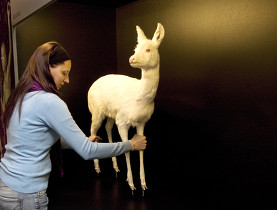
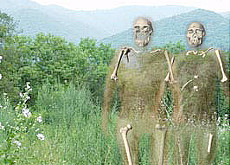
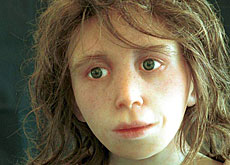
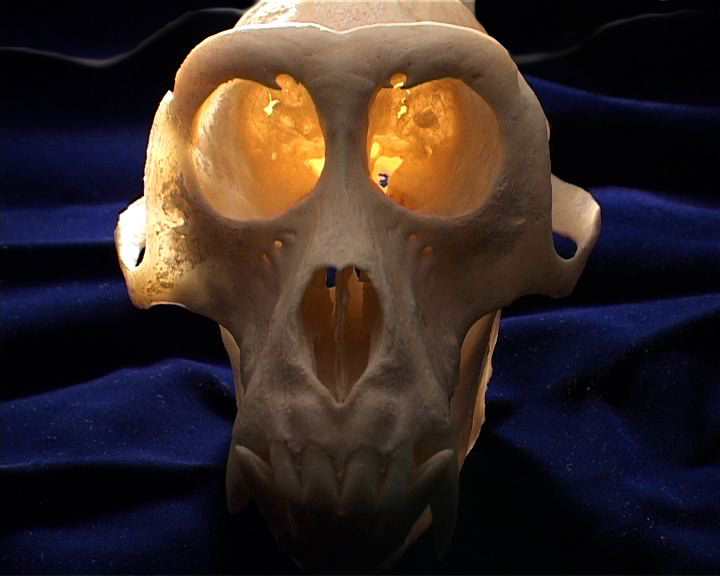
You can find an overview of ongoing debates with our journalists here. Please join us!
If you want to start a conversation about a topic raised in this article or want to report factual errors, email us at english@swissinfo.ch.